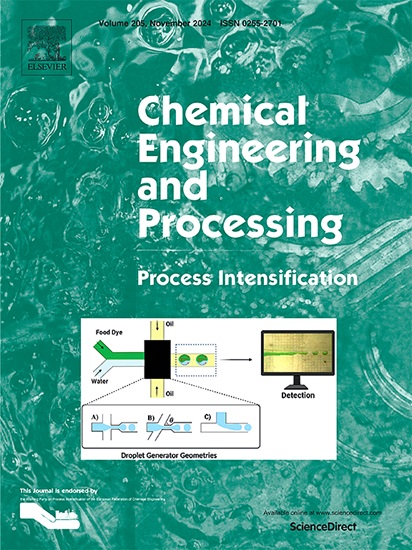Environmental life-cycle assessment and green principles in process intensification: A review of novel catalysts from solid waste
IF 3.8
3区 工程技术
Q3 ENERGY & FUELS
Chemical Engineering and Processing - Process Intensification
Pub Date : 2025-02-13
DOI:10.1016/j.cep.2025.110208
引用次数: 0
Abstract
The development of novel catalysts from solid waste has become a key strategy in sustainable research. This review focuses on the environmental life-cycle assessment (LCA) of waste-derived catalysts, highlighting their role in process intensification and alignment with green chemistry principles. LCA is crucial for evaluating the environmental, socioeconomic, and design implications of catalyst production from waste materials. The continuous disposal of solid waste contributes to rising energy demands, environmental degradation, and human health risks, which underscores the need for efficient, green solutions. This review examines the evolution of waste-derived heterogeneous catalysts, emphasizing their significance in the circular economy and sustainable practices. The impact of analytical and physico-chemical properties on both conventional and intensified processes is explored, with reaction time and temperature identified as critical parameters in catalyst synthesis. Conventional catalyst production, often involving high temperatures (>600 to <900°C) and long reaction times (4–5 hours), is energy intensive. However, process intensification, reducing these conditions to <100°C and <100 minutes, offers a sustainable alternative by minimizing energy consumption while maintaining catalyst performance. This review also compares various analytical techniques, such as X-ray diffraction, scanning electron microscopy, and density functional theory, to assess the effectiveness of catalysts produced through intensified methods. The findings suggest that intensified synthesis processes yield results comparable to traditional methods, demonstrating their potential to reduce energy demand and promote sustainability in catalyst production from solid waste.

求助全文
约1分钟内获得全文
求助全文
来源期刊
CiteScore
7.80
自引率
9.30%
发文量
408
审稿时长
49 days
期刊介绍:
Chemical Engineering and Processing: Process Intensification is intended for practicing researchers in industry and academia, working in the field of Process Engineering and related to the subject of Process Intensification.Articles published in the Journal demonstrate how novel discoveries, developments and theories in the field of Process Engineering and in particular Process Intensification may be used for analysis and design of innovative equipment and processing methods with substantially improved sustainability, efficiency and environmental performance.

 求助内容:
求助内容: 应助结果提醒方式:
应助结果提醒方式:


